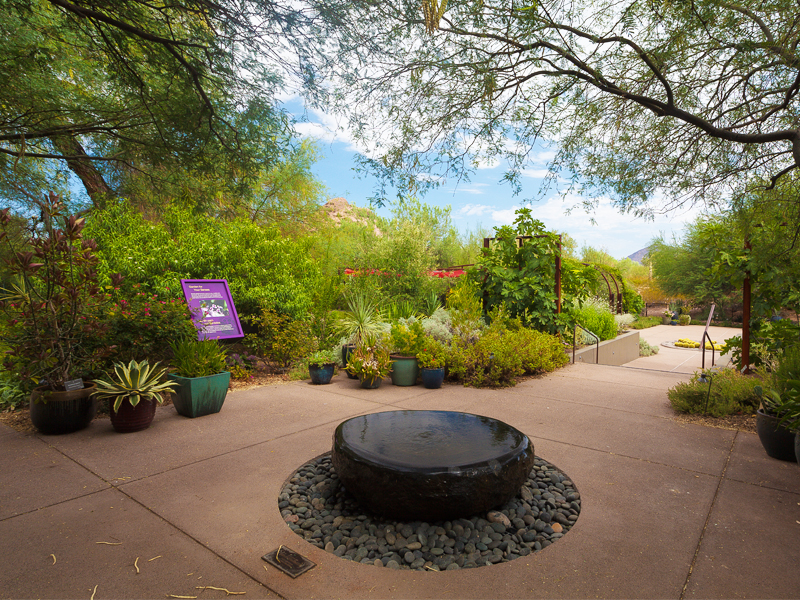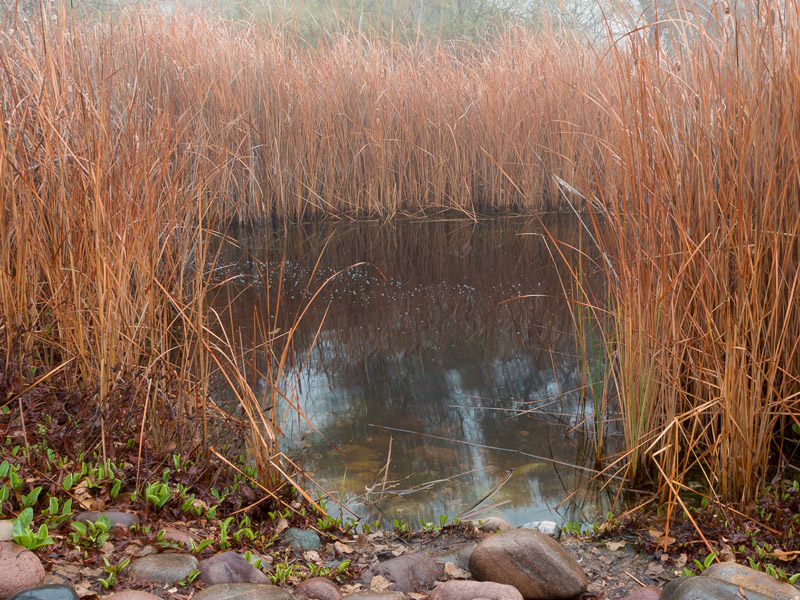Garden staff always hope visitors will return with a thirst to learn more. Remarkably, one of the things that sparks the most curiosity is water. Previous visitor research showed that water is a key topic of interest to audiences across all demographics. Though it might not be immediately apparent, the Garden is truly centered around water. Our vast collection of cactus, agave and other plants can’t survive without it. It provides much needed sensory respite, serves as a gathering place for animals and encourages keen scientific exploration. Here are a few of our favorite water features to experience during your next visit.
CENTER FOR DESERT LIVING TRAIL THEOBALD FOUNTAIN & RAIN BARRELS
Nature sounds can have a profound restorative effect on our nerves. Studies completed at Stockholm University and Brighton and Sussex Medical School have found that listening to things like wind in the trees or running water calms the systems that trigger our “fight or flight” reflex— essentially the mechanisms that cause stress and anxiety. The fountain honoring John O. Theobald II on the Center for Desert Living Trail provides an opportunity to focus to the sight and sound of bubbling water to relax.
Just east of the fountain sits one of the Garden’s active water harvesting systems. The large brown tank is a rain barrel, collecting and storing runoff from the roof of Archer House to water the wide variety of plants on this trail and helping the Garden with its goals of environ-mental and economic sustainability. Though Phoenix only receives an average of 9 inches of rain per year, the square footage of the building plus the capacity of the cistern allows for nearly 5,000 gallons of rain water to be collected annually. With the winter rainy season approaching, this barrel will soon be put to good use.
HARRIET K. MAXWELL DESERT WILDFLOWER LOOP TRAILSHADE GARDEN
This trail is a natural stop for many of the Garden’s most popular pollinators, including honey bees and butterflies. Not only can they find a variety of food sources in the flowers, they can also find water. The Shade Garden, located between the Bee and Boulder Gardens, hosts a fountain and a small pool under the broad canopy of a mesquite tree. You may still see bees hovering nearby, even in the winter months. These buzzing insects find this spot particularly helpful in the colder weather, as they collect water to help dissolve crystallized honey in their hives.
PLANTS & PEOPLE OF THE SONORAN DESERT LOOP TRAIL DESERT OASIS
The largest and most dynamic water feature in the Garden is the pond in the Desert Oasis section of the Plants & People of the Sonoran Desert Loop Trail. Visitors can use their eyes to search for snails, fish and dragonflies, moving through the water. If you prefer a challenge, try to scan for great horned owls in the cottonwood trees nearby. Many of the pond’s critters hibernate in the winter, but you might see Woodhouse’s toads start to emerge as early as late January or February.


